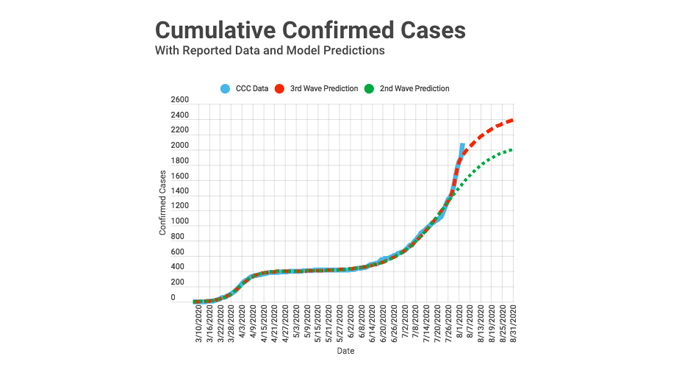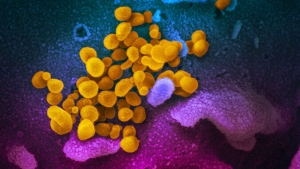
A predictive model that forecasts COVID-19 cases and deaths in Hawaiʻi has been developed by University of Hawaiʻi at Mānoa civil and environmental engineering students, under the guidance of Professor Albert Kim. Their goal is to inform residents about the pandemic and explain how science could be used to predict future cases.
“This research targets the general public, including Hawaiʻi residents, who want to know how many more infection cases will occur in the near future,” Kim said. “I also hope that the website can help state administrators to make any future policies, and more importantly, instantaneous administrative responses.”

The model forecasts cumulative confirmed cases and deaths across Honolulu, Kauaʻi, Hawaiʻi and Maui counties. It is based on a prior study by Kim which analyzed the first wave of COVID-19 cases across countries from the Group of Twenty, the premier forum for international economic cooperation. Kim said his research discovered similarities including when the number of cases peaked, the increases in death counts and the policies instituted by governments to control its spread.
Students gain real-world experience
Mia Fong, Brenton Sasaoka and Seth Colburn are each pursuing a bachelor’s degree in civil engineering at UH Mānoa and are working as research assistants for the COVID-19 modeling project, which is supported by the UH Mānoa Native Hawaiian Science and Engineering Mentorship Program housed in the College of Engineering.
Fong said the team works together daily to collect new data and constantly updates its analysis and predictions.
“Hopefully people will see our predictions for the coming 5 to 14 days and realize that’s how many new cases we could have just from that one day of going out and putting aside social distancing rules. These models will hopefully show people what the consequences of their actions could be,” Fong said. “These graphs can also help us to determine what is a normal spike following the easing of restrictions and what is cause for concern.”
Sasaoka said this experience is helping him prepare for a future engineering career.
“Besides the innovative tricks and tools of Microsoft Excel, I’ve learned how to determine and analyze patterns,” Sasaoka said. “We had to really look at our graphs and critically think about the conclusions we could come to based on the patterns we saw, a practice that I know will aid me in my future as an engineer.”
Sparking the curiosity of future STEM students
Colburn hopes the research demonstrates to younger Native Hawaiians how math and science can be applied to real-life issues and sparks their interest to pursue a degree in STEM. Colburn said his passion to educate started with a visit to Mālama Honua Charter School to teach kids about chemistry.
“We did a baking soda and vinegar reaction experiment to blow up a balloon and while conducting the experiment, myself and the others were teaching the kids the chemical reaction that was causing it to turn into gas. It was eye opening to see the kids enjoying the experiment and even asking questions,” Colburn said. “I want to be a mentor for future generations and spark their imagination of what is possible with math and science.”
He also hopes the model will influence the community to take the pandemic more seriously and practice social distancing to flatten the curve.
—By Marc Arakaki

